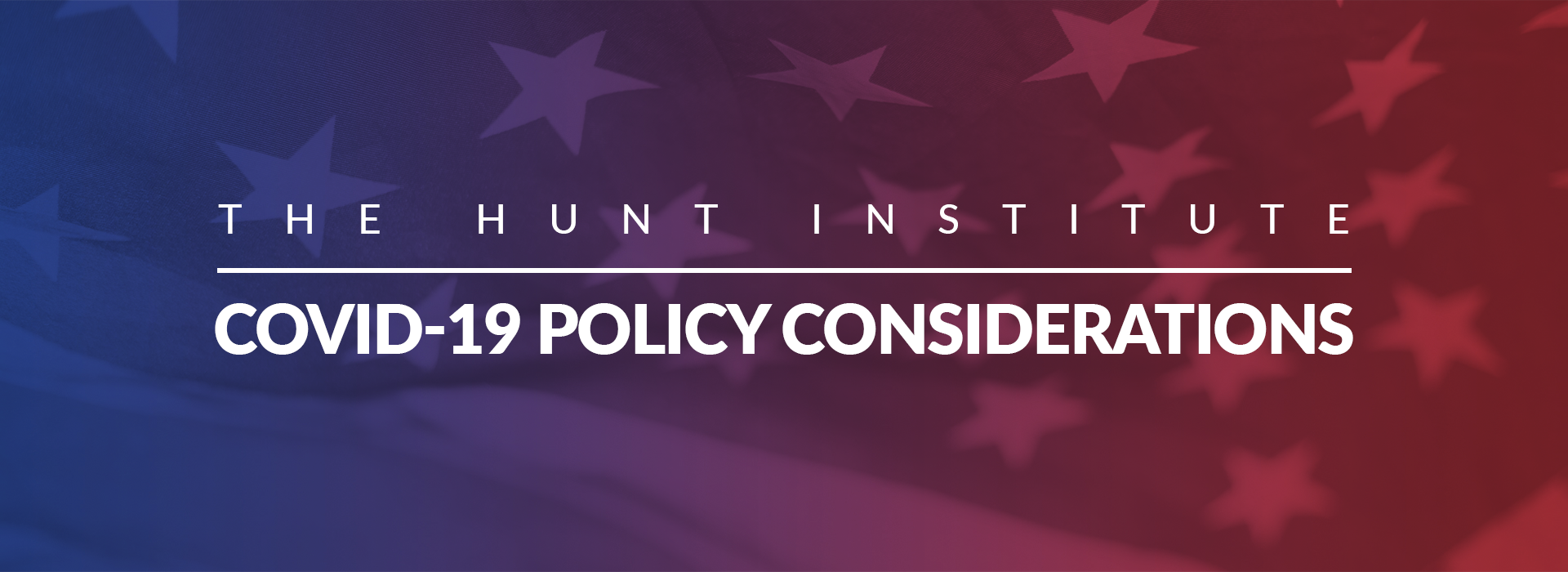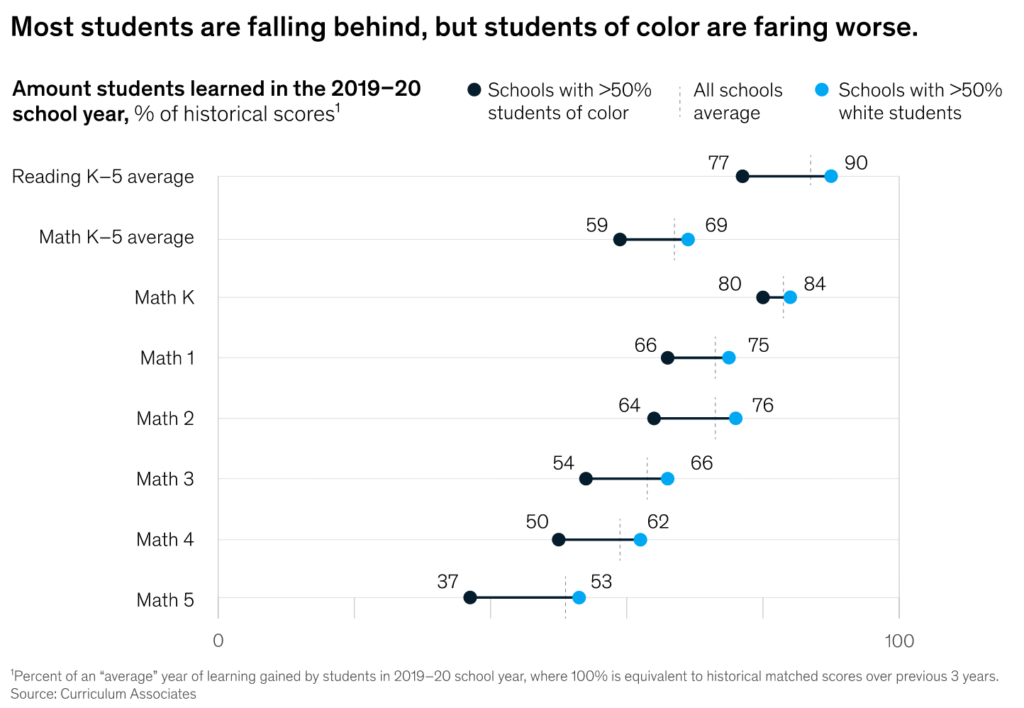

March 17, 2021
Nationwide school disruptions due to the COVID-19 pandemic have impacted the education of millions of students, as many students experience inequitable access to distance learning and educators find growing evidence of large disparities by income. As schools continue to tackle exacerbated learning inequities caused by the pandemic, there are opportunities to identify and utilize evidence-based practices to provide equitable access to innovative learning opportunities.
In a June 2020 survey of nearly 500 school districts, the Center for Reinventing Public Education (CRPE) found that only one-third of districts required teachers to provide remote instruction with engaging and interactive curriculum content and one-on-one support for students. Additionally, findings from this survey also suggest significant gaps between low- and high-income communities in remote learning access, with affluent communities being twice as likely to provide real-time lessons for students. With a lack of clear expectations for instruction, districts opened themselves up to varied remote learning options that differed from teacher to teacher, subject to subject, and class to class. These low or unclear expectations for online instruction have played out poorly for students from low-income households, English language learners, and students with disabilities.
Students of color returned in the Fall of 2020 with significant learning loss, equivalent to roughly three months of learning, that will likely exacerbate long-standing opportunity gaps.

Families from communities with more students from low-income backgrounds and students of color have faced various barriers to participation in distance learning. These communities continue to struggle with inadequate access to requisite technology, suffer chronic absenteeism, disruptions in English language learning, and lack of access to high-quality child care.
As states work to provide all students with a high-quality education during remote and hybrid learning, they must aim to make instruction conducive to student learning. Further, given the large learning loss and the limitations of remote learning, students will need additional learning hours to make up for the loss. Amidst distance learning, educators have worked to implement student-centered learning approaches to enable students to learn at their own pace, according to personalized learning plans. Educational leaders have begun to weigh expanded learning opportunities (ELOs), identify ELO best practices, and understand their effects on students of color and low-income backgrounds.
Expanded Learning Opportunities (ELOs) offer students structured learning environments outside the traditional school day through before and after school; summer; and extended-day programs. How students spend their time outside of the classroom has been shown to have large impact on their academic achievement. Therefore, expanded learning opportunities are often implemented in hopes of improving student achievement and test scores, while reducing learning loss.
ELOs take a wide variety of forms from state to state but the following are a few widely used formats:

Various ELOs emerged as a result of the COVID-19 pandemic as schools closed last spring to avoid the spread of infection. Community providers such as the Boys and Girls Club, YMCA, and others have aimed to provide care and student activities to keep students involved and learning.
However, the consequences of the COVID-19 pandemic on student performance and equity have been staggering and will have a lasting impact on the growing achievement gaps in the United States. ELOs provide a set of flexible, customized, and equitable learning approaches that bring educators, communities, and families together to support student needs.
The coronavirus pandemic has provided states and educators the opportunity to increasingly move toward a broader vision of learning that goes beyond traditional in-person instruction. Policymakers should consider the important role expanded learning opportunities can play in student achievement moving forward.
Involve and Support Families | As a bridge between various learning settings – virtual and traditional in-person – parents play an important role in fostering children’s learning experiences. Therefore, policymakers should work to engage families in ELOs, finding ways for families and programs to work together to better support children’s learning and development. Students from low-income families, families of color, and other marginalized backgrounds can benefit from more accessible ELO opportunities that provide effective communication on the benefits of ELO engagement. Further, educators should aim to share key data and results regarding individual student learning progress to all families, especially students who are at risk of falling behind.
Find Opportunities for Collaboration | Policymakers should look to expand local and state public and private support for expanded learning opportunities. Education stakeholders can work to catalyze stakeholders with a role in expanded learning such as youth development organizations, child welfare, early childhood agencies, and others to identify, adopt, and implement effective ELO programs that support students equitably. The New York State Afterschool Network has seen success in utilizing statewide partnerships that promote student learning.
Consider Staffing Allocations | ELOs will require considerations regarding staffing as student learning time is extended outside of the traditional school day or year. Educators will have to grapple with newfound responsibilities or additional instructors will be required to fulfill roles in ELO models. Therefore, states should work to support districts with the necessary funding and logistical support required to implement necessary programs. Many communities have adopted some form of expanded learning. In Grand Rapids success was seen with the implementation of many ELO programs, however, staff budget cuts created an instructor shortage that resulted in the regions inability to continue providing support.
Advocate for necessary funding | To provide students with robust support, schools must be equipped with the necessary funding streams to promote community and instructor engagement in student learning. Education stakeholders and policymakers should aim to advocate for additional funding – potentially from the federal government – to support equitable expanded learning programs in schools that currently lack the resources to grant students these opportunities.